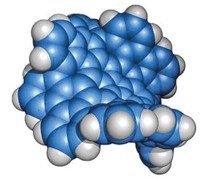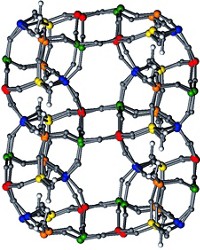Advertisement
Grab your lab coat. Let's get started
Welcome!
Welcome!
Create an account below to get 6 C&EN articles per month, receive newsletters and more - all free.
It seems this is your first time logging in online. Please enter the following information to continue.
As an ACS member you automatically get access to this site. All we need is few more details to create your reading experience.
Not you? Sign in with a different account.
Not you? Sign in with a different account.
ERROR 1
ERROR 1
ERROR 2
ERROR 2
ERROR 2
ERROR 2
ERROR 2
Password and Confirm password must match.
If you have an ACS member number, please enter it here so we can link this account to your membership. (optional)
ERROR 2
ACS values your privacy. By submitting your information, you are gaining access to C&EN and subscribing to our weekly newsletter. We use the information you provide to make your reading experience better, and we will never sell your data to third party members.
Materials
More Atomically Thin Materials
Studies probe structure and electronic properties of two-dimensional forms of silicon and boron?
by Mitch Jacoby
April 30, 2012
| A version of this story appeared in
Volume 90, Issue 18
By conducting a combined microscopy, spectroscopy, and computational study of one-atom-thick films of silicon, European researchers have gathered what they describe as “compelling experimental evidence” that they have succeeded in preparing the Si analog of graphene (Phys. Rev. Lett., DOI: 10.1103/PhysRevLett.108.155501). Dubbed silicene because of its predicted graphenelike structural and electronic properties, the ultrathin 2-D form of silicon is expected to be inherently more compatible with silicon-based electronics than graphene is. A number of research groups have previously claimed to have prepared the material, but those claims were based strictly on scanning tunneling microscope (STM) images, which are often difficult to interpret. Patrick Vogt of Berlin’s Technical University, Paola De Padova of Italy’s National Research Council in Rome, and coworkers, grew atomically thin Si films on silver via vapor deposition. They showed that the bond lengths and angles determined from STM and angle-resolved photoemission data, and the details in micrographs, closely match the results of quantum calculations. In related work, Rice University’s Boris I. Yakobson and coworkers devised a computational method that treats vacancy-riddled one-atom-thick films of boron as alloys of atoms and vacancies. The model predicts that, in contrast to graphene, the holey boron family of materials includes many stable structures and phases (Nano Lett., DOI: 10.1021/nl3004754).





Join the conversation
Contact the reporter
Submit a Letter to the Editor for publication
Engage with us on Twitter